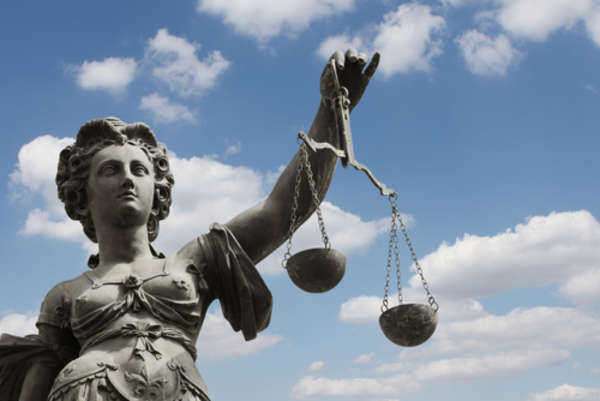
Introduction
Libel and slander are two types of defamation of character that are often used interchangeably. However, they refer to different forms of defamation. In this article, we will define libel and slander, highlight the differences between the two, and discuss the legal implications of each.
What is Libel?
Libel is a type of defamation that occurs when a false, harmful, and written statement is made about an individual, organization, or business. Examples of libel include false statements published in newspapers, magazines, blogs, or social media.
To prove a libel case, the plaintiff must show that:
– The statement in question was false.
– The statement was harmful to their reputation.
– The statement was published.
– The statement was about them or their business.
What is Slander?
Slander is a type of defamation that occurs when someone makes a false and harmful statement about an individual, business, or organization. Unlike libel, slander involves spoken words, such as remarks made during a conversation, on radio and television broadcasts, speeches, or even gestures.
To prove a slander case, the plaintiff must demonstrate that:
– The statement was false.
– The statement was harmful to their reputation.
– The statement was made to a third party.
– The statement was about them or their business.
Differences Between Libel and Slander
The main differences between libel and slander include:
1. The form of communication: Libel involves written communication, while slander involves spoken communication.
2. Permanence: Libel is permanent since written statements can be saved and shared multiple times, while slander is usually transitory.
3. Proof of harm: In a libel case, the plaintiff only needs to prove the existence of a written statement, while a slander case requires evidence that the spoken word caused harm.
Legal Implications of Libel and Slander
Libel and slander cases can have serious legal implications. If found guilty, the defendant could be liable for compensatory damages meant to cover any economic losses incurred due to the defamation. In severe cases, the court may also impose punitive damages designed to punish the defendant.
Undertakings may also be ordered, requiring the defendant to take specific actions, such as issuing a public apology or retracting the defamatory statements made.
Conclusion
Libel and slander are two forms of defamation that can greatly harm an individual, business, or organization’s reputation. While both types of defamation involve false and harmful statements, they differ in terms of the form of communication used. Understanding these differences and the legal implications of both can help individuals and businesses avoid such claims. If you believe that you have been a victim of defamation, speak to a legal professional to understand your options.
Libel and slander are both forms of defamation. Defamation is a common law tort, governed by state law, in which an individual makes a “publication” of a defamatory statement of and concerning the plaintiff that damages the reputation of the plaintiff. The distinction between slander and libel comes in the form of the publication.
Slander involves the oral “publication” of a defamatory remark that is heard by another, which injures the subject’s reputation or character. Slander can occur through the use of a hand gesture or verbal communication that is not recorded. Libel, on the other hand, is the written “publication” of a defamatory remark that has the tendency to injure another’s reputation or character. Libel also includes a publication on radio, audio or video. Even though this would be considered oral, or verbal, communication to someone it is actually considered to be libel because it is published in a transfixed form.
What are the elements of a cause of action for libel or slander?
The elements of a defamation suit; whether slander or libel, are: Which the speaker knew or should have known was false; That causes injury to the subject of the communication.
Slander and libel lawsuits differ in the way that a prima facie case must be proven. In the case of slander, the defendant doesn’t have to prove that the statements he made are true; instead the plaintiff has to prove that the defamatory statements made against him are false. In other words, the burden of proof is on the plaintiff.
In making a prima facie case for libel first, the plaintiff needs to prove that the statement was false. This can be difficult to prove, especially if evidence has disappeared. For some claims that fall within “libel per se” these are easier to prove. The accusation that one is a criminal can be easily proven false by submitting a lack of a criminal record.
Proving falsity in a slander case can be difficult, especially if evidence has disappeared. For some claims that fall within “slander per se” these are easier to prove. The accusation that one is a criminal can be easily proven false by submitting a lack of a criminal record. Second, in both a slander and libel case the plaintiff needs to prove that the statement was published by the defendant.
Libel cases are easier to prove than slander cases. A perfect example is when a newspaper makes libelous statements. There is a printed copy of the statement, with the authors name usually right under it. Slander, however, does not create the same tangible evidence. Often slander involves a “he said, she said” situation. Unless the publisher admits to having made the slanderous statement there is often no proof that it was ever said. If one is contemplating a slander action then witnesses should be gathered far before any decision to file a lawsuit.
Damages
Differences exist in the amount of damages that are awarded in slander and libel actions. In a libel action, unless the plaintiff is a public official or public figure, the plaintiff does not need to prove financial damages. The common law has made a policy determination that the publication of defamatory statements in a transmittable, affixed form that is capable of widespread and simple dissemination will certainly cause damage and therefore damage to one’s reputation or character is enough for a court to impose damages.
A slander action is different. The threat of a single publication through a medium incapable of mass dissemination, longevity, or permanence shall is not considered to be as grave as that of a libelous publication. Therefore the common law requires that the plaintiff prove, not only damage to his/her reputation, but also financial damage. Is defamation on the internet libel or slander?
It is unclear at this point whether the transmittal of defamatory statement over the internet constitutes libel or slander. This may not seem like an important distinction but it is important, especially as to the awarding of damages. Some cases throughout the U.S. court system have tried to answer the question.
In Varian v. Deflino Day two former employees had libeled Varian executives by posting more than 14,000 defamatory messages on over 100 different websites. The jury found that the defendants liable for defamation as well as misappropriation of the executives names.
In 2006 a Florida court awarded a plaintiff $11.3 million dollars when the defendant posted numerous comments on message boards defaming the plaintiff and her business reputation. The court did not specify whether the cause of action was based on libel or slander.
Due to the courts unwillingness to specify a specific form of defamation associated with internet use it can be perceived that the court system has not yet determined how to deal with the matter. Cyberlaw is a new and important field of law and as more cases come to trial stage the answer to this question may come with it.



































